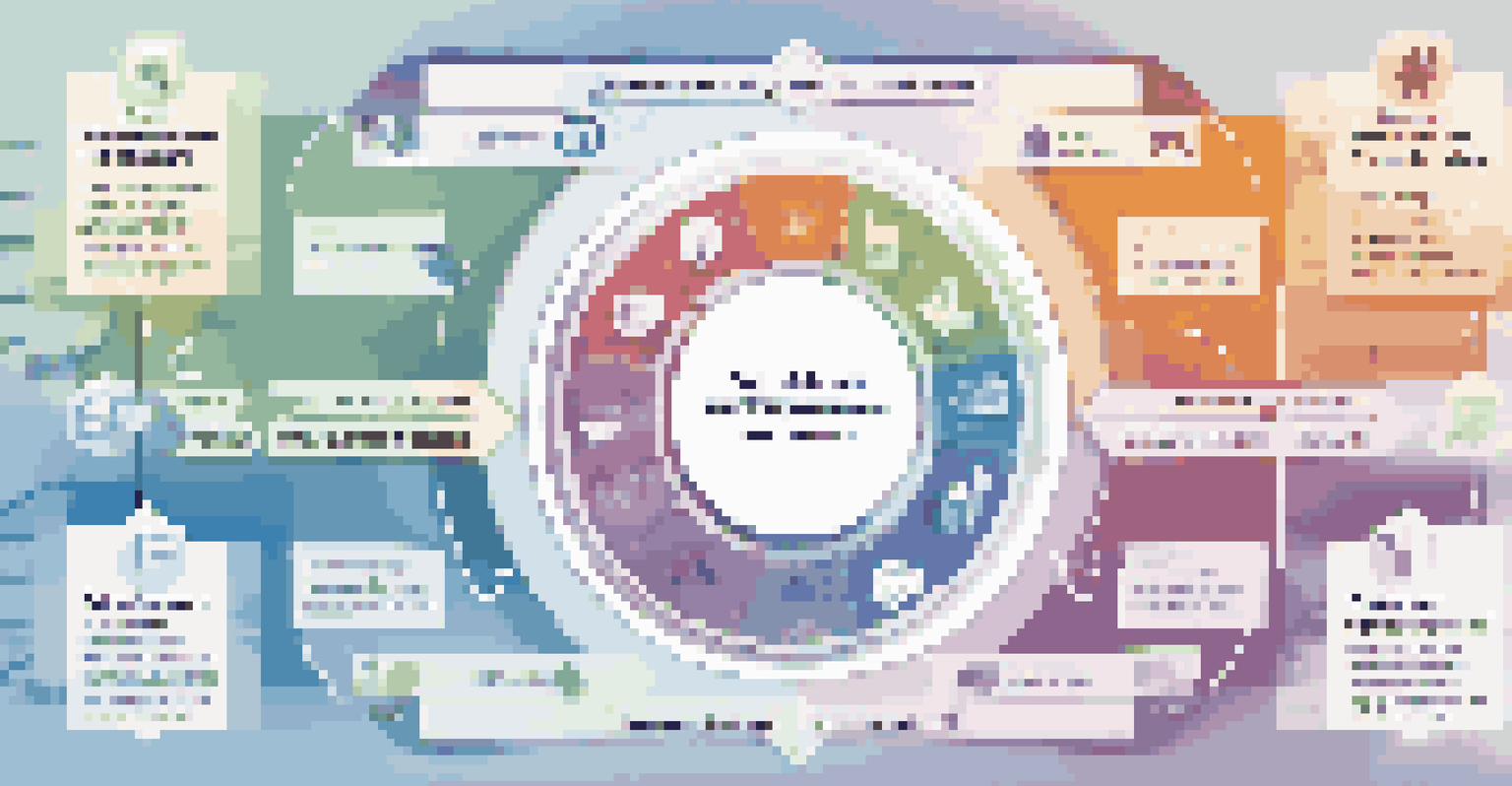Creating a Data-Driven Culture with Augmented Analytics

Understanding Augmented Analytics and Its Importance
Augmented analytics leverages machine learning and AI to enhance data analysis. This means that instead of just relying on traditional data reporting, organizations can gain deeper insights and make more informed decisions. It makes data more accessible to everyone, not just data scientists, fostering a culture where data-driven decisions are the norm.
Without data, you're just another person with an opinion.
By simplifying the analytical process, augmented analytics allows employees at all levels to engage with data. Imagine being able to ask questions about your sales performance and receiving instant, actionable insights without needing a degree in statistics. This democratization of data is crucial for creating an environment where every team member feels empowered to use data in their daily tasks.
In a world where data is the new oil, understanding and utilizing augmented analytics can set companies apart. Those who embrace this technology can not only streamline operations but also foster innovation through data-backed strategies. As organizations adopt this approach, they can expect to see growth in efficiency and a boost in morale as employees take ownership of their data-driven roles.
The Role of Leadership in Promoting Data Usage
Leadership plays a critical role in cultivating a data-driven culture. When leaders prioritize data usage and demonstrate its value, it sends a clear message to the rest of the organization. It's not enough to simply talk about the importance of data; leaders must actively engage with it and model its use in decision-making processes.

For example, a CEO who shares data insights during company meetings can inspire employees to think critically about how they use data in their own roles. This visibility helps to break down any perceived barriers and encourages a mindset shift across the organization. Leaders should also celebrate data-driven successes to reinforce its importance within the corporate culture.
Empower Employees with Data
Augmented analytics democratizes data access, empowering all employees to make informed, data-driven decisions.
Moreover, investing in training and resources shows a commitment to building a data-savvy workforce. By providing tools and opportunities for employees to enhance their data literacy, leadership can ensure that everyone feels equipped to contribute to a data-driven culture. This not only boosts confidence but also enhances the overall effectiveness of the organization.
Encouraging Collaboration Across Teams
Collaboration is key to fostering a data-driven culture. When teams work together, they can share insights and perspectives that lead to better decision-making. By breaking down silos and promoting cross-departmental communication, organizations can leverage the collective intelligence of their workforce.
In God we trust; all others bring data.
For instance, a marketing team may analyze customer data to identify trends that the sales team can then use to tailor their approach. This synergy not only enhances efficiency but also ensures that everyone is aligned towards common goals. Encouraging regular meetings or workshops focused on data sharing can facilitate these collaborations.
Additionally, using augmented analytics tools that allow for real-time data sharing can further enhance collaboration. When teams have access to the same data and insights, they can quickly pivot strategies based on emerging trends. This not only fosters a sense of unity but also drives a culture where data is viewed as a shared asset.
Investing in the Right Tools and Technology
To create a data-driven culture, organizations must invest in the right tools and technologies. Augmented analytics platforms offer user-friendly interfaces that make data analysis accessible to everyone. These tools typically come with built-in machine learning capabilities that can automatically detect patterns and provide insights without requiring extensive technical knowledge.
Choosing the right technology is crucial, as it can significantly impact the adoption of data practices across the organization. Companies should look for solutions that integrate seamlessly with existing systems and allow for easy data visualization. A tool that presents data in an engaging way can make a world of difference in encouraging employees to interact with it.
Leadership Drives Data Culture
Active engagement and support from leadership are crucial for fostering a culture that values data usage and collaboration.
Moreover, ongoing support and training for these tools are essential to maximize their potential. By fostering an environment where employees feel comfortable exploring and utilizing these technologies, organizations can ensure that they are truly harnessing the power of augmented analytics.
Building Data Literacy Among Employees
Data literacy is the ability to read, work with, and analyze data. It's essential for employees to understand not only how to use data tools but also how to interpret and apply the insights they glean. Building a workforce that is data literate can dramatically enhance an organization’s decision-making capabilities.
Training programs that focus on data skills can equip employees with the knowledge they need. These programs can range from basic data analysis workshops to advanced training on specific analytics tools. Encouraging a culture of continuous learning ensures that employees stay updated on the latest data trends and technologies.
Additionally, fostering curiosity about data can lead to innovative solutions and improvements within the organization. When employees feel empowered to ask questions and explore data, it creates a vibrant environment where data-driven insights can flourish. This proactive approach to data literacy can significantly contribute to a robust data-driven culture.
Creating a Feedback Loop for Continuous Improvement
Establishing a feedback loop is vital for continuous improvement in a data-driven culture. Organizations should encourage employees to share their insights and experiences with data tools and processes. This feedback can provide valuable information on what's working and what needs to be adjusted to better meet the needs of the workforce.
For example, regular surveys or focus groups can help identify areas where employees may be struggling with data analysis or where tools may be lacking. By actively seeking this input, companies can make informed decisions on how to enhance their data strategies. It also shows employees that their voices matter, further encouraging participation in the data culture.
Invest in Tools for Success
Organizations must invest in user-friendly analytics tools and ongoing training to enhance data literacy and collaboration among employees.
Moreover, incorporating lessons learned from feedback can lead to more effective data practices over time. As organizations adapt and refine their approaches based on real-world experiences, they can cultivate an environment of innovation and growth. This cycle of feedback and improvement is essential for maintaining a vibrant, data-driven culture.
Measuring Success and Celebrating Wins
To gauge the effectiveness of a data-driven culture, organizations must establish clear metrics for success. By tracking key performance indicators (KPIs) related to data utilization and decision-making, companies can assess their progress over time. These metrics provide a tangible way to understand the impact of augmented analytics on business outcomes.
Celebrating successes, both big and small, reinforces the importance of data-driven practices. Whether it’s recognizing a team that successfully used data to increase sales or highlighting an individual who made a significant data-driven decision, these celebrations foster a sense of community and motivation. Acknowledgment can go a long way in encouraging ongoing engagement with data.

Additionally, sharing success stories across the organization can inspire others to embrace data-driven practices. By showcasing how data insights have led to tangible results, employees may feel more inclined to leverage data in their own work. This not only strengthens the data-driven culture but also drives overall business success.